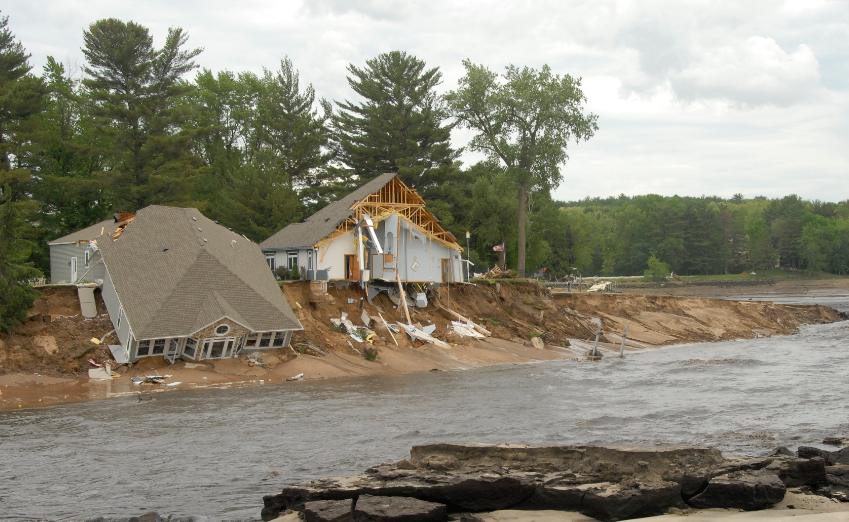Two weeks after the drastic “bomb cyclone” storm in Midwest, US the flood affected the 9 nine main wheat producing states. The fields of these states are still in under water. This will eventually harm the soil and plant impeding. Today, we are going to discuss the after effects of the US flood and its upcoming status.
The Midwest US flood will lower the production of wheat, corn, and soy.
The spring flood still keeps on affecting the bigger ratio of cropland. The storms resulted in the flooding of 1 million acres of US farmland.
The flooded water has destroyed the million dollar stored crops. Additionally, it also dispersed tires, silt, and sand in the fields. Not just that it has also ruined the roads and the railway.
The mid-March cyclone has shattered the farmers who were already suffering from the low income and US-China Trade War.
The National Oceanic and Atmospheric Administration of the US of government have warned about the “unprecedented flood season”. It forecasts heavy rains. River waters can spread even more due to the melting snow in the northern growing area.
US Flood – Farmer’s Statement:
A farmer for 18 years from Fullerton, Nebraska, Ryan Sonderup aged 36 years said, “There are thousands of acres that won’t be able to be planted.”
He said that if we get straight sunshine in the whole May and June only then there are some possibilities of planting otherwise not. But, looking at the rainy conditions may be this is not possible yet.
Justin Mensik who is a corn farmer in Nebraska said that the rebuilding roads should be the first priority. Only after that, farmers could bring fertilizers. Afterward, checking the soil for the seeding is the third step.
He said that due to the dispersion of all unwanted things it’s impossible to grow a good crop.
US Flood – Lost Cattle:
On Wednesday morning, flood water has covered the 200,000 acres land in five northwestern counties adjoining Missouri river. As informed by the Spokesman for Natural Resources Conservation Service Columbia of US Agriculture Department, Charles Rahm.
According to an email of the executive director of Wisconsin state office of USDA’s Farm Service Agency, 1000 dairy, and beef animals were lost in Wisconsin along with the damaged agricultural structures.
Also Read: Migrant Enclosure in Texas – US Border Patrol Facility
US Flood – Corn Crop:
For now, the biggest worry of the farmers is corn planting. Aaron Saeuling, Agriculture expert at Iowa state university said, “There is just not going to be enough time to move a lot of that debris.”
Iowa farmers should plant soybean between 31st May and 15th June in order to get fully recovered by the insurance. The insurance ensures minimum price which farmers will get while booking sales for their crop. But, this could only happen if they start planting in the given deadline. As later on, yields can decrease drastically. However, the deadline may differ from state to state.
The chief executive of Agricultural Artificial Intelligence Company Sara Menker said that the snow-covered land and cloud covers make it difficult for the NASA satellites to identify the flood waters properly,
The floods caused around $1 billion damage in Nebraska as stated by the state Governor.
The flooded acreage shows less than 1% of US land used to grow crops like wheat, corn, sorghum, barley, rice, and cotton.
According to Gro Intelligence, Iowa, top crop and 2nd soy-producing state had the greatest water coverage area than any other state.
So, this was everything about the Midwest US flood, its status and after effects. For more information stay tuned to Daily Patron.
















